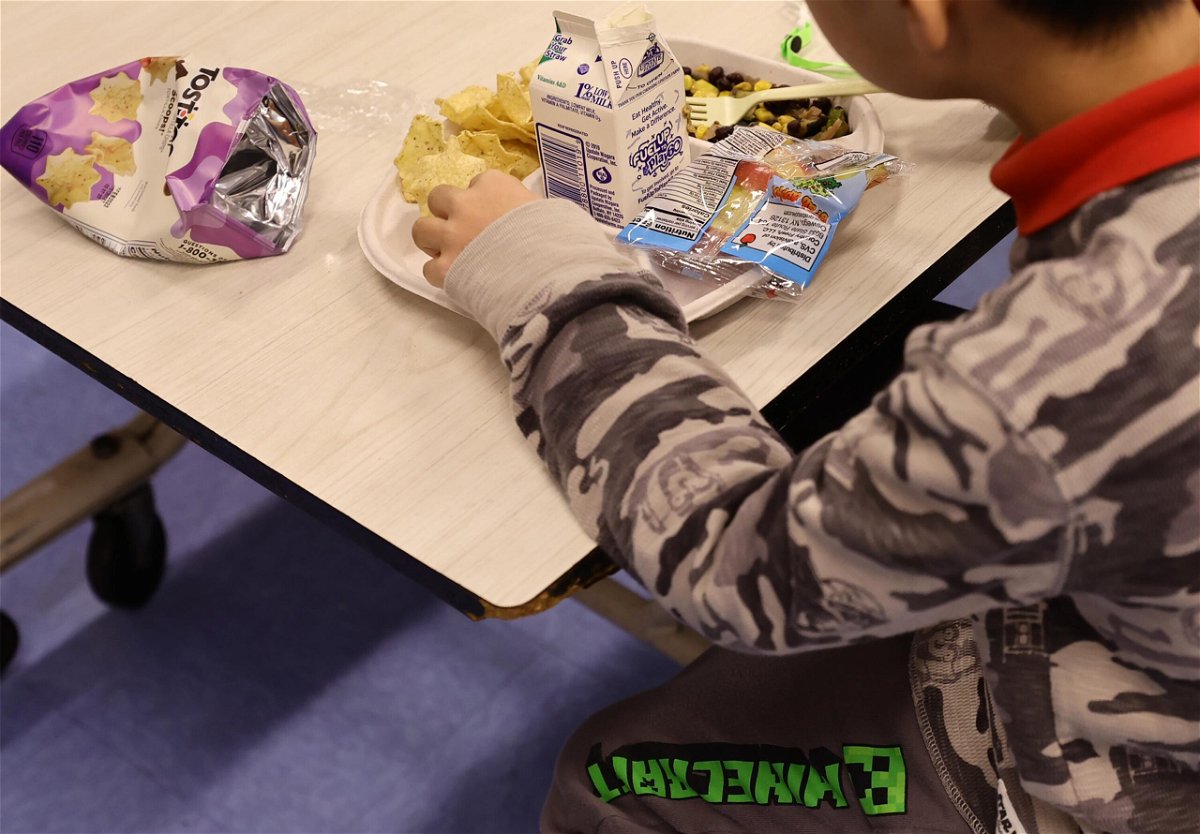Senators push to extend pandemic school lunch waivers

A student eats a meal served for lunch at a school in New York City on February 4.
By Tami Luhby, CNN
A bipartisan group of senators is trying to extend pandemic school meal waivers that gave districts extra federal funds and flexibilities to provide free food to more kids and to cope with supply chain and labor issues.
Michigan Sen. Debbie Stabenow, a Democrat, and Alaska Sen. Lisa Murkowski, a Republican, introduced a bill on Thursday that would give the US Department of Agriculture the authority to extend the waivers through September 2023, instead of having them expire June 30, 2022.
The legislation — which has the other 49 Senate Democrats as co-sponsors, as well as Republican Sen. Susan Collins of Maine — would also require schools to craft plans to transition back to normal meal operations.
“All the issues that affect other parts of the economy are affecting our school programs,” Stabenow told CNN, referencing the spike in food prices, supply chain breakdowns and labor shortages. “We gave them extra financial support to be able to juggle these increased costs. And those costs have not gone away.”
Congress did not include an extension of the waivers in the full-year spending bill that lawmakers approved earlier this month. As a result, districts are set to see a 40% reduction in meal reimbursements from the USDA and will have to meet strict federal nutrition and serving requirements after this school year.
The latest extension effort, however, faces many hurdles. It needs at least 10 GOP votes to pass the chamber. Stabenow, who chairs the Senate Committee on Agriculture, Nutrition and Forestry, hopes to include the provision in the additional Covid-19 funding package the Biden administration is requesting from Congress.
Asked about the extension during the spending bill negotiations earlier in March, a GOP leadership aide said the waivers were designated as “temporary” Covid-19 measures and that the Biden administration did not include the extension in its Covid funding request. Also, many of the waivers are designed to assist when schools are forced to close, which is no longer a focus.
Plus, the aide said, the estimated $11 billion cost of extending the waivers for another school year could be covered using unspent funds in the Covid-19 relief package the Democrats passed last March.
Helping schools cope with Covid-19
Congress gave the USDA the authority to boost school meal reimbursement rates and to waive certain requirements in a coronavirus relief package approved in March 2020 and then again in a federal spending measure that fall. School districts were scrambling to provide millions of children with the meals they would have received had schools not shut down because of the Covid-19 pandemic.
The USDA is using the authority to help schools cope with the higher cost of providing meals during the pandemic and with the ensuing supply chain chaos and labor shortages. It is reimbursing districts at a summer rate of $4.56 per meal, on average, as opposed to the typical $2.91 per meal for the school year. It is also allowing schools to provide free meals to all students, instead of requiring them to verify families’ incomes.
Around 30 million students are now receiving free meals, according to the USDA, up from about 20 million children who qualified based on their household income prior to the pandemic.
Also, the agency is able to provide districts with more flexibility to handle pandemic outbreaks — such as letting students eat in their classrooms or providing grab-and-go meals for children who must quarantine at home.
The USDA can also waive penalties for school districts that can’t meet nutrition requirements — including those governing whole grains, sodium and vegetables — because of supply chain problems.
Some 92% of school meal programs are experiencing challenges due to supply chain disruptions, according to a USDA survey released in early March. Products are not available, orders are arriving with missing or substituted items, and shortages of cooks, food prep personnel, drivers and maintenance staff continue. This is forcing schools to pay more for food and workers.
The waivers have also had a big impact on providing children with meals over the summer, which typically has much lower participation than in-school meals. More communities can offer free food to all children at summer programs, thanks to the waivers. Parents can pick up multiple meals at a time and can take them home to their kids.
Without the waivers, only communities where at least 50% of children are eligible for free meals can offer food over the summer. The meals must be distributed at an approved location and eaten on site.
Last July, an average of nearly 7.6 million children received a meal each day through the summer program, compared with 3.7 million kids in July 2019, according to the USDA.
The-CNN-Wire
™ & © 2022 Cable News Network, Inc., a WarnerMedia Company. All rights reserved.